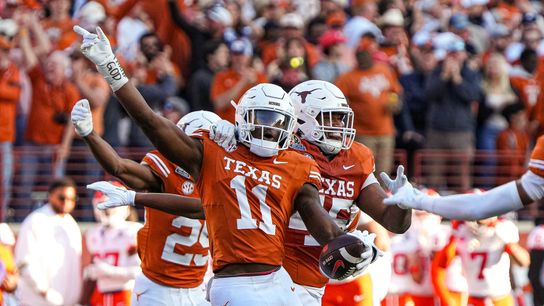Remember when Ryan Day made waves by telling a group of Columbus businesspeople that it would take $13 million to maintain a championship football roster? That was in 2022. Three years later, $13 million wouldn't buy a Guaranteed Rate Bowl roster.
Kirk Bohls of the Houston Chronicle reports Texas will spend between $35 and $40 million for its football roster in 2025, the first once House settlements come into play, assuming the settlement is approved by Judge Claudia Wilken. Once approved, schools will share around $20 million of athletics department revenue directly with athletes, with football expected to take around 75 percent of that. In February, Georgia shared that it will spend $13.5 million on football, of an expected $20.5 million.
Given that, the headline here is that Texas still plans to spend somewhere between $15 and $25 million through its collective, the Texas One Fund. And that number comes at a discount -- quarterback Arch Manning makes all his money on his own, through "true" name, image and likeness deals.
This means that, in what's believed to be the first time in college football, Texas will pay more for its players than its coaches in 2025. The Longhorns will pay $22 million for Steve Sarkisian and his top-level assistants in 2025. As an athletics department, Texas reported nearly $332 million in revenue against $325 million in expenses in 2024, with football the main driver of that. Texas raised nearly $134 million in donations, a $48 million increase, which was largely attributed to the football team's breakthrough 2023 season. The Longhorns reported $182 million in revenue from the 2023 football season.
The belief within the Chronicle story is that activating House payments will make collectives like the Texas One Fund obsolete, even by the story's own admission, the Longhorns will spend settlement and collective money to fund the 2025 roster. But, somehow, by 2026 everyone will be cool with collective money disappearing. That belief is built upon a third-party clearinghouse that's supposed to enforce fair market value for any NIL deal over $600 -- in layman's terms, to require all NIL deals to be Arch Manning-style advertising and promotion, not collective-style payouts simply for being on the roster. Needless to say, it remains to be seen if a plan to take money out of college athletes' pockets will survive in court.
“It’s just unsustainable,” a source told the Chronicle. “The next season after this year, the whole world will be back to reality.”
Of course, everyone thought the $13 million paid to Ohio State's roster in 2022 was unsustainable, too. Four years in to the NIL world, the numbers keep moving nowhere but up. Like it or not, this system keeps sustaining just fine.
